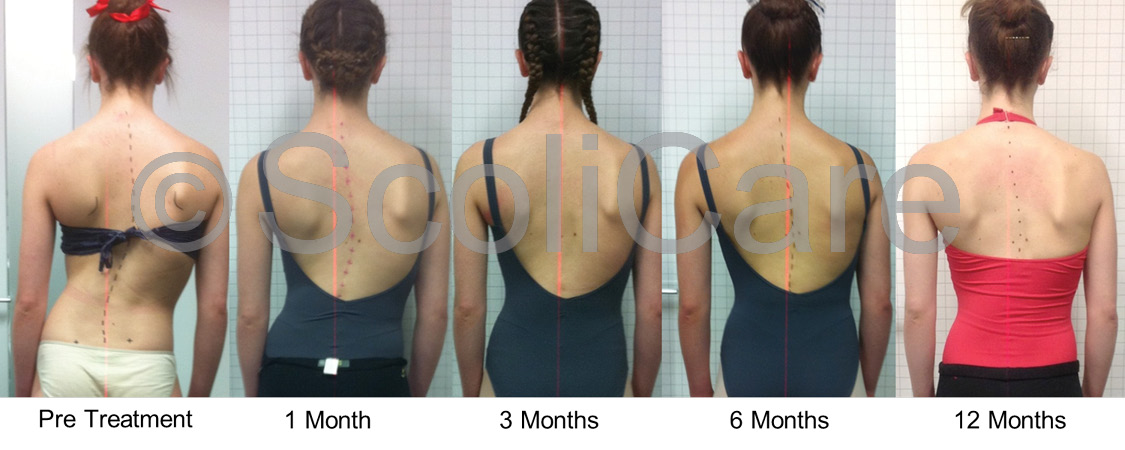Patient aged 17 with scoliosis curve measured 44 degrees reduced to 29 degrees.
Background:
Patient presented to the Sydney Scoliosis Clinic aged 17 at the time of initial examination. Adolescent Idiopathic Scoliosis was diagnosed 18 months earlier and no treatment was undertaken during this time. At the initial consultation the scoliosis curve measured 44 degrees. This patient had seen a surgeon and was recommended to undergo surgery. She reported having bad back pain (7-8/10) most days. The pain was worse after dance classes.
The patient was on track to become a professional ballet dancer however the pain and the effect of the scoliosis on the body posture and the effect that surgery would have on the spinal flexibility meant that this future career was at risk.

Treatment:
A combination of customised 3D designed rigid brace wear, and a scoliosis specific exercise program based on the SEAS principles was recommended. It was recommended to use the brace for 6-8 hours per day and to do the exercises twice per day for 20 minutes. This intensive regime was recommended for 3-6 months.
Results:
As seem from x-rays and posture photos, a cosmetic improvement in the body was seen within the first 4 weeks. This improvement was maximised at 6 months. After the end of intensive treatment, the body posture settled to its new corrected position which is demonstrated at the 12 months photo. At the 12 month mark an x-ray was taken with an independent radiology clinic with the patient standing in her relaxed normal posture. This shows an improvement in the scoliosis curve and the alignment of the spine. The curve was corrected by 15 degrees, reducing from 44 degrees to 29 degrees.
The patient’s pain was reduced to 2-3/10 and was only present on an occasional basis. As the body posture improved so did the performance at ballet. At the end of the intensive part of the treatment program the patient was selected to join a top ballet institution overseas. As a result of these improvements surgery was cancelled.
Discussion:
This case demonstrates the potential for a combination of customised 3D designed rigid brace wear and scoliosis specific exercise to improve the cosmetic look of the body, the spinal alignment and degree of curve, and the pain associated with the scoliosis. Although relatively mature this patient was able to achieve 15 degrees of correction of her curve.
Although this may not be achievable in every case it shows that in cases where the patient is flexible and there is an aspect of the scoliosis that is not fixed it may be possible to make correction even after growth has finished. Continuation of the exercise program may be required to maintain the correction.

Conclusion:
In this case it was possible to reduce a large curve that was at a surgical level to a moderate curve no longer in need of surgery. Choosing the right treatment to achieve the goals of cosmetic improvement, curve reduction, and pain relief was successful in this case.

NB: All cases are different and results may vary case to case. Our commitment is to recommend the most appropriate treatment based on the patient’s type and severity of scoliosis.
© ScoliCare & The ScoliCare Clinic Sydney